Big yellow school buses perch outside of a high school in Little Rock. The fact that it is a Saturday morning makes them somewhat haunting in their emptiness. I never cared much for high school. Those that did usually didn’t have braces, bad hair and pants that were permanently high-waters. However I never thought of walking into the doors of my high school at 14 years old thinking of that walk was anything but a personal struggle, one that would pass in four years. For nine students in Little Rock, Arkansas that walk into school was the difference between right and wrong, a good society and a bad one, a bright future and dismal present.
In the fall of 1957, nine African American students marched into the formerly white Central High school in Little Rock. These academic grounds would become a crucial battlefield in the struggle for civil rights. Arkansas Governor Orval Faubus called on the Arkansas National Guard to prevent the nine students from entering the school, a direct order against the U.S. Supreme Court’s desegregation ruling. On September 4, 1957, these teenagers tried to go to school but were turned away.
For two weeks, these brave souls were not allowed entry into a school that they had every right to attend. Finally, on September 25th, the nine teenagers would get a little help from federal troops. President Dwight D. Eisenhower, the first president since the post Civil War Reconstruction period to use federal troops in support of civil rights, ordered federal troops to Central High School to make certain the rights of the African-American students remained in tact. This act stressed the federal government’s commitment to abolishing separate educational systems based on the color of one’s skin. Documenting this symbolic right of passage, television news crews put this Little Rock high school on the world’s stage.
The battle would not end there. The nine students would be followed to class by the guards to make certain they weren’t barred from the classroom. They endured abuse to breaking points that lend to expulsion and transfers to other schools and states. The white high school students that befriended the African-American students also faced ridicule over their choice of companionship. Ernest Green would become the first of the Little Rock Nine and the first African American graduate of Central High School. Martin Luther King Jr. even came for the ceremony as a guest of his family. Carlotta Walls, Jefferson Thomas and Thelma Mothershed would also go on to receive their diplomas from Central High School.
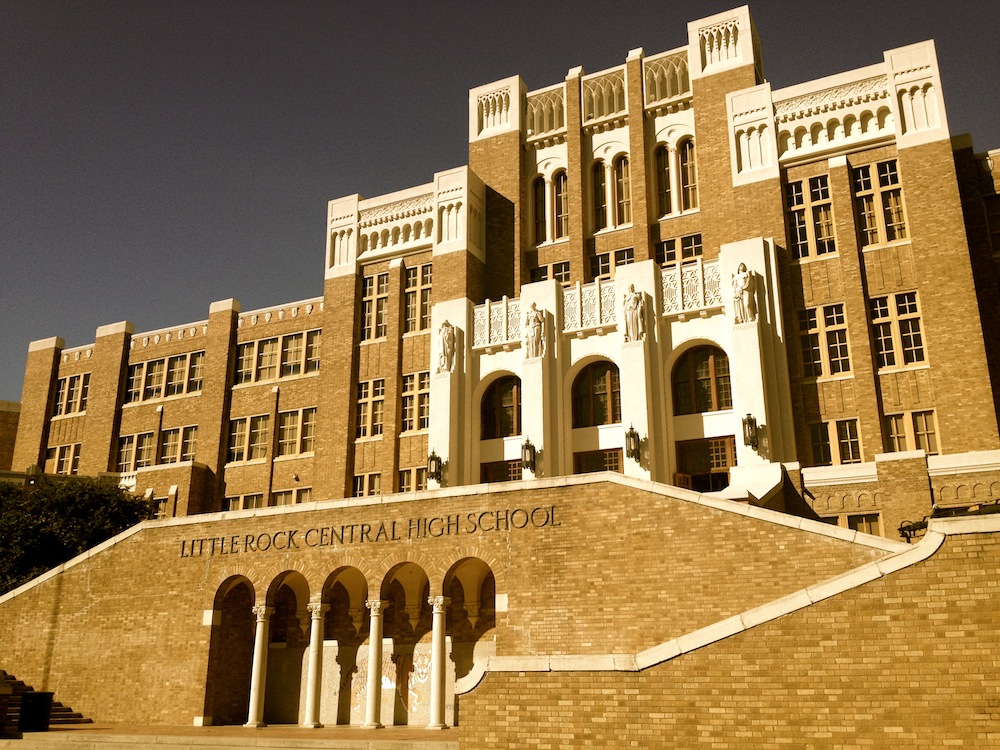 I stand on those steps that launched desegregation in public schools in the United States. The director of a film crew is barking at me to move out of his shot. Oddly enough, I’m denied entry into Central High School. For a moment, I fester with anger, boil with range. How dare he say I can’t walk around this public space. And then I put my redheaded temperament aside for this denial pales in comparison.
I stand on those steps that launched desegregation in public schools in the United States. The director of a film crew is barking at me to move out of his shot. Oddly enough, I’m denied entry into Central High School. For a moment, I fester with anger, boil with range. How dare he say I can’t walk around this public space. And then I put my redheaded temperament aside for this denial pales in comparison.
A man with a giant sound boom motions me to hurry on inside before they start filming again. I run up the steps and duck inside the high school where the roar of a lion greets me. Walking through Central High’s hollowed halls, I feel dread. A high school is generally the last place you want to be on a Saturday or a Tuesday for that matter. This trepidation in the pit of my stomach is tangible. I can hear struggle and achievement with each step.
I head for the Central High School National Historic Site Visitors Center just up the road from the high school. Exhibits detail the civil rights movement through history, building up to that fateful September in 1957.
My last stop on this trip back to high school comes on the Arkansas State Capitol Building grounds. Set up on the north side of the Arkansas State Capitol building, Testament is a civil rights memorial to the Little Rock Nine, the work of local artist John Deering. Around this group of students are nine bronze plaques with quotes from Minnijean Brown, Terrance Roberts, Jefferson Thomas, Melba Pattillo, Elizabeth Eckford, Ernest Green, Gloria Ray, Carlotta Walls and Thelma Mothershed, the Little Rock Nine.
I was never much for high school. I remember the gym classes of horror, lining up to pick teams. I was always picked last or not picked at all. This is my sob story, superficial in comparison to the Little Rock Nine. They had to fight tooth and nail just to go to class. Once they got there, the fight wasn’t over. The abuse wouldn’t end. Gym class was probably just one element to the horror of high school for them.
I didn’t have troops escorting me to class. I was never denied entry based on the color of my skin. And why I didn’t have to suffer through such atrocities is thanks to what took place on the steps of a Little Rock high school.
Have you ever visited Central High School in Little Rock?


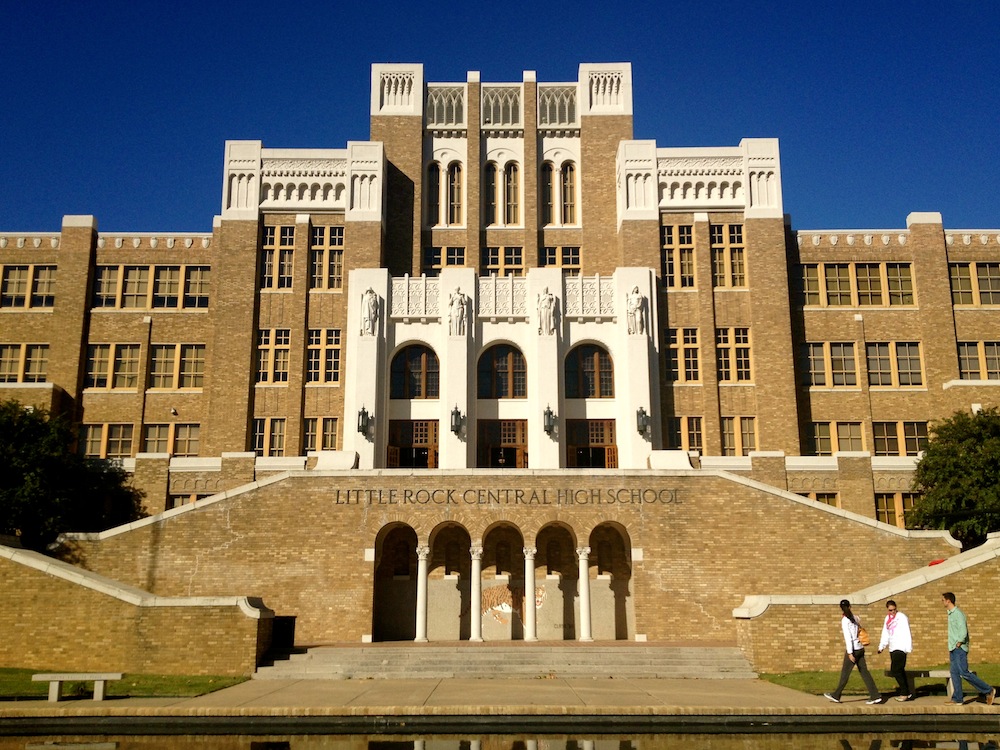
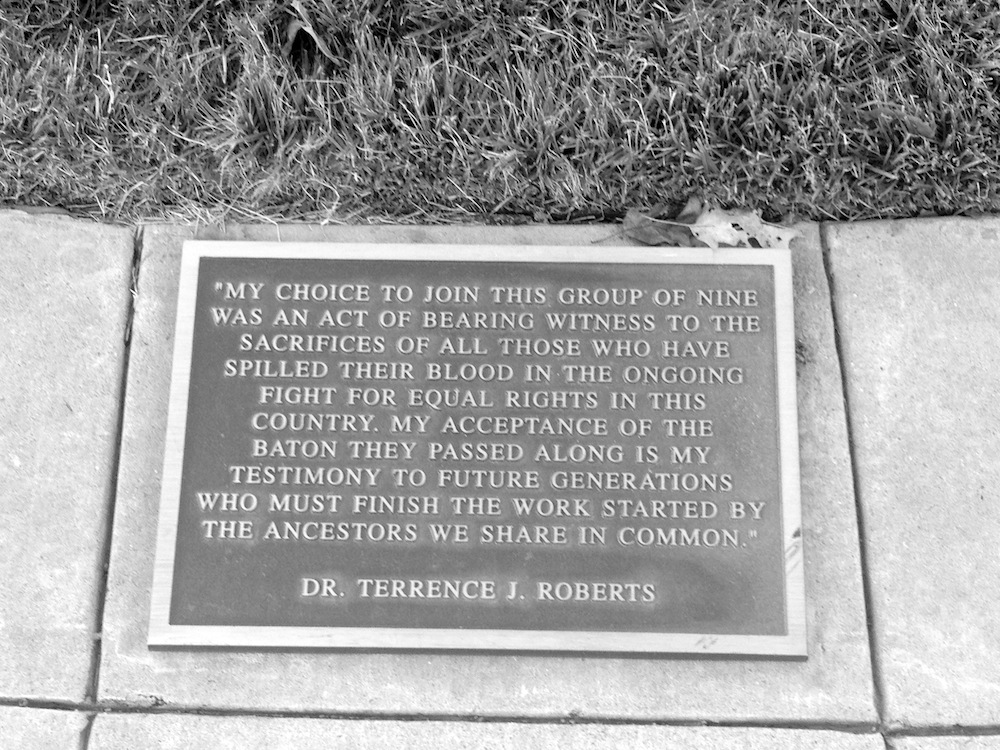
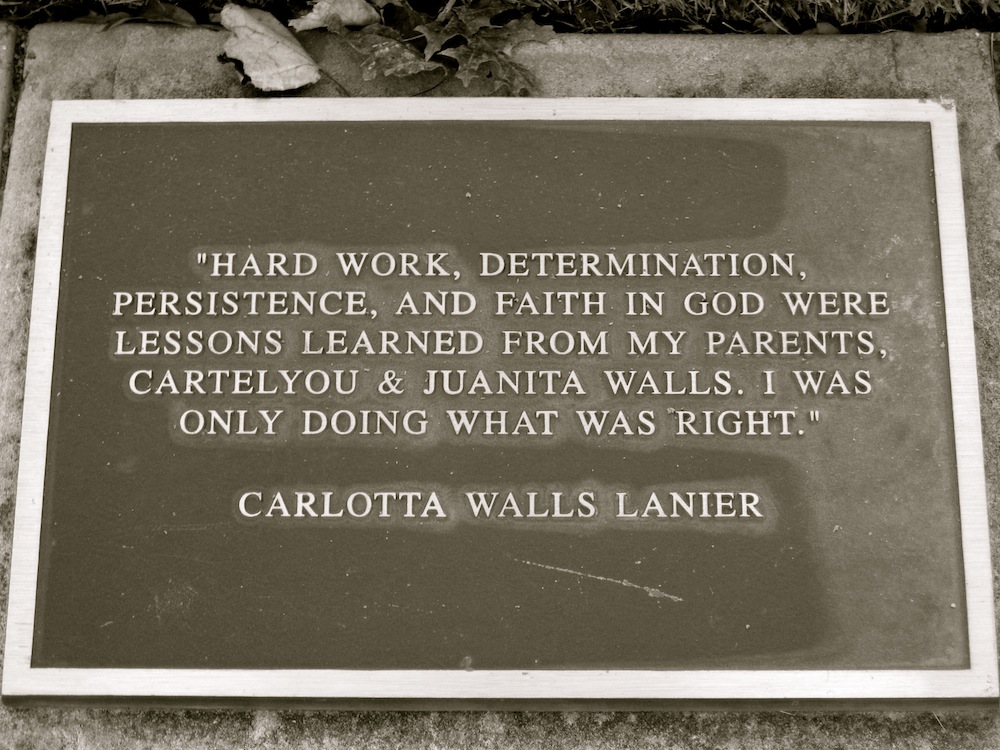
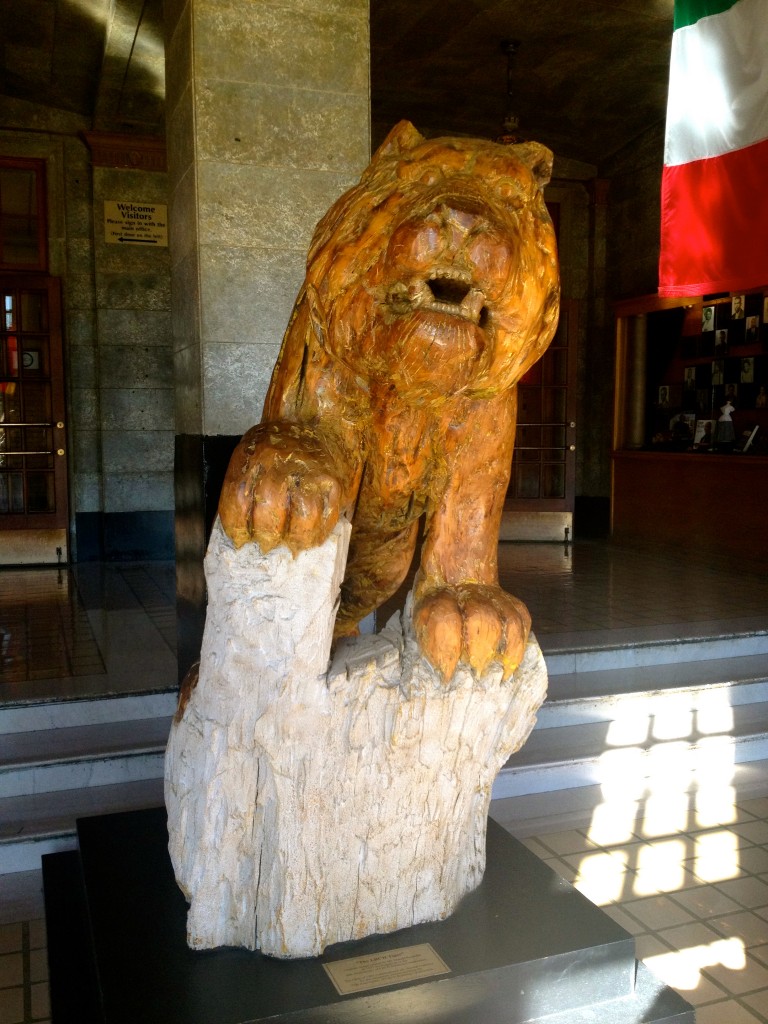
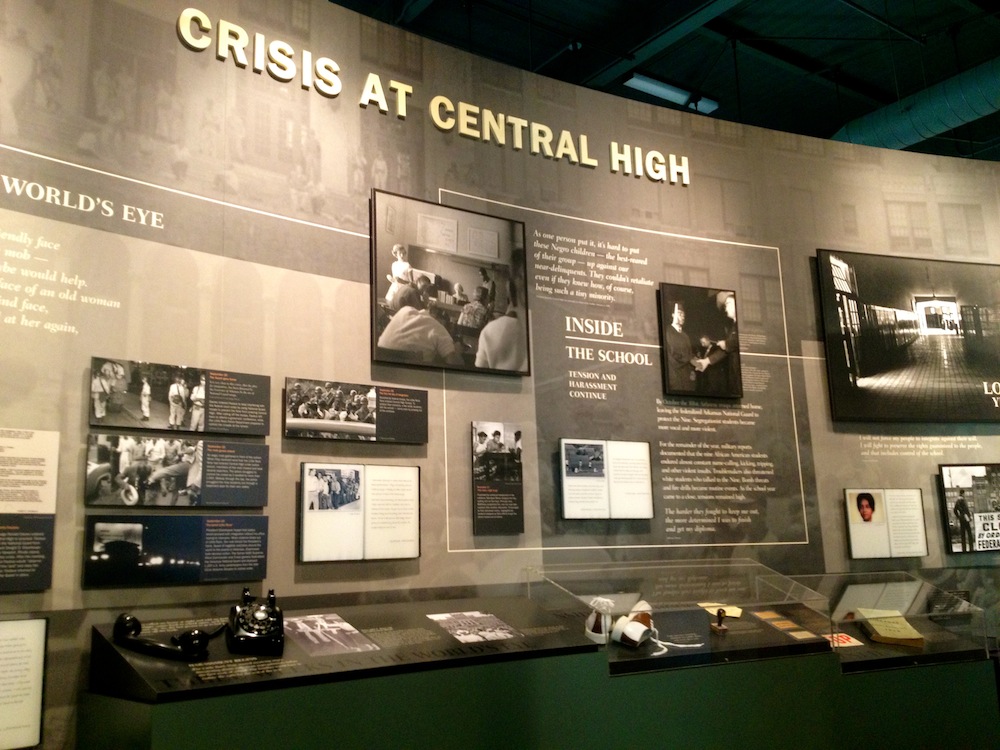

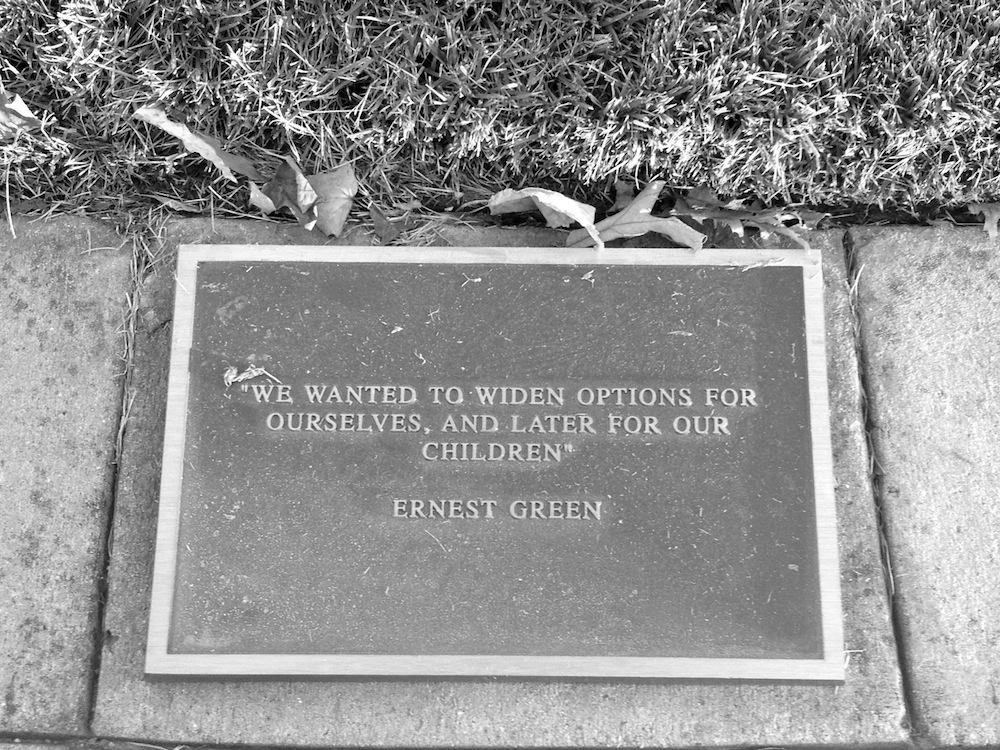
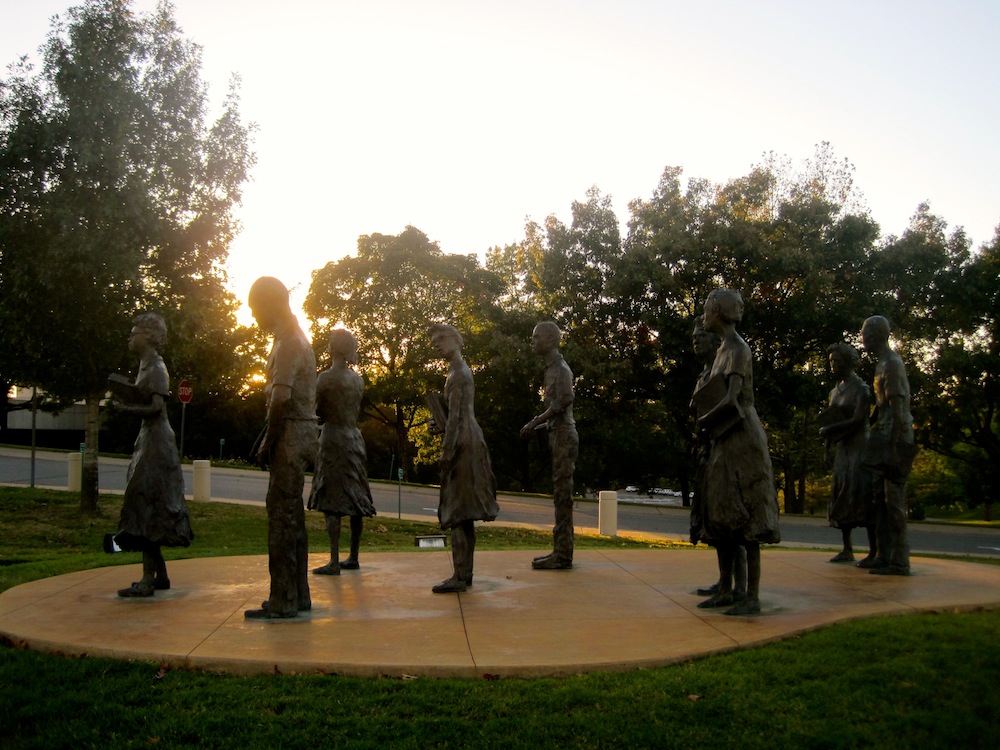
Great article Suzy, it really puts things into perspective. I can’t imagine the courage it took for the nine to do what they did. It was an important moment in Arkansan and American history and is a very moving place to visit.
Powerful post, Suzy. I went to high school as well as elementary school in Missouri and remember the flag pole out in front of the elementary school which was erected by the Ku Klux Klan, with their initials KKK embeded in the concrete base of the pole. Pretty horrifying. I also remember the first black kids who went to the school. One of them was in my grade, the other was a year behind me and they both became very popular in high school. My entire high school career there were only nine black kids in the entire school of several hundred students. I’m sure the situation has changed a great deal by now.
A well told article Suzy, thanks for this. I often seen TV coverage of the protest but it is great to see you retracing the footsteps and relaying the story.
I often seen the Martin Luther King displays in Atlanta airport but there is so much history for the fight to equal rights.
Thanks once again for a great article.
Inspiring. It’s a shame they had to fight for something they should have had every right to in the first place.
It’s a Great Story. I lived in LR for 8 years, and learned that story while living there. It is one I will never forget!
you did a great job presenting it!